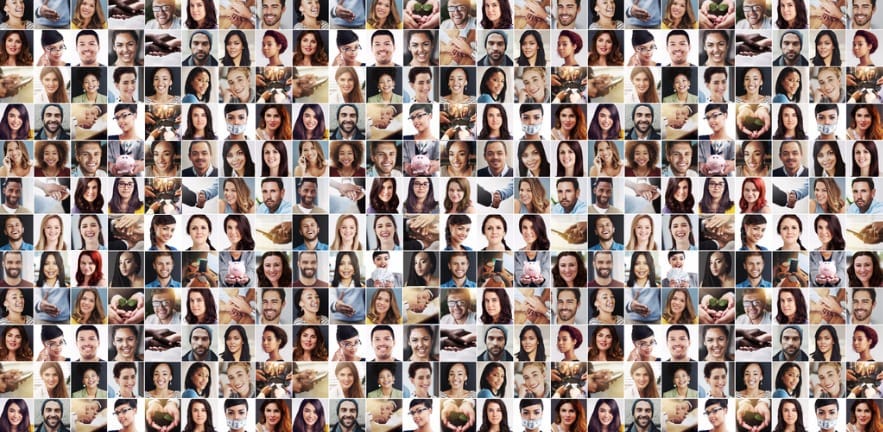Picture the CEO of a fortune 500 company. Chances are, regardless of your background, you’re picturing a tall male. And that preconception isn’t unfounded: less than 15 per cent of American men are over six foot tall, and yet 60 per cent of American corporate CEOs are over six foot tall.

Clearly, companies are not consciously recruiting based on height – it has absolutely no effect on performance, but in all likelihood, this hiring pattern has been caused by an unconscious bias towards tall men.
So how can we all address unconscious bias in our day to day lives?
- Recognise that everyone has inherent biases
It is important to recognise that we all have our own unique biases – and we have developed them with good reason. Our way of looking at the world is driven by a hard-coded pattern of making unconscious decisions about others based on what feels safe, valuable or worthwhile. We’re bombarded with 11 million pieces of information at any given moment, and whereas realistically we only have the capacity to deal with 40. In order to be effective we use shortcuts to filter out unnecessary information.These shortcuts are unconsciously made when a recruiter is sifting through CVs, or when making decisions about promotion and compensation packages. Limited time potentially means quick decisions based on unconscious prejudices – which is why it’s vital to examine and address these biases. - Identify what your biases are
The next step is to identify what your biases are – including positive ones. What do you think when you first look at someone? What are the first three things you notice and what assumptions are you making based on their appearance or gender? Become aware of these thoughts.If you are a leader, think about these biases might be affecting your hiring decisions or the way you treat members of your team, and remember this includes positive biases. Are you assuming certain capabilities and therefore not looking to provide the support a colleague might need? - Challenge your biases
Once you are aware of certain biases or patterns of thought, think about examples which you have come across which challenge that belief. Consciously note when you meet someone or see something that goes against conventional stereotypes.One way of doing this is to focus on individuals rather than groups; for example if you find yourself thinking about a particular group’s tendency to behave in a certain way, think about an individual from that group. Do they entirely fit that profile? What other things do you know about them that don’t fully fit your perception of them? This individualisation also extends to the language you use. Not everyone in a particular group will agree on a term for their identity, so what is that person’s preference? - Expose yourself to a wider perspective
Increase your opportunities for contact with a diverse range of people. Think about your social group – do you tend to socialise with people who are similar to you? How can you broaden your circle of friends or work with those who have a different background?Exposure to stereotypes can reinforce unconscious biases, so make an effort to use imagery in the workplace such as posters, newsletters, or videos which challenge these. Pay attention to the media sources you use and look for media which reports from a wide-range of perspectives. - Apply these ideas to your work/studies
Studying an MBA is a great opportunity to get to know and learn about many different backgrounds, and make an effort to occasionally break away from working and socialising with people who have a similar background to you. On the Cambridge MBA, there is also the opportunity to do this within your college and the wider university as well.Within the workplace, if you are recruiting, consider that if you are interviewing someone who is like you, that you might be subject to “affinity bias” – where you seem to like someone because they seem familiar in some way. You might not even be aware of it, but your comfort with someone similar is in all likelihood influencing your opinion of them.
During Orientation, Cambridge MBA students took part in a workshop on unconscious bias, led by Sucheta Nadkarni, Sinyi Professor of Chinese Management and Director of The Wo+Men’s Leadership Centre at the School. In this practical session, students were asked to examine their own prejudices, and consider how challenging their unconscious biases could make them a more capable leader.
Professor Sucheta Nadkarni says:

“Today’s business environment is characterised by an increased complexity of work environment, time pressures, and dealing with unfamiliar and ambiguous situations on a daily basis. These conditions are ripe for unconscious biases to affect how we view our peers, interview candidates and team members. Decades of research has shown that unconscious biases can hinder our abilities to realise our potential and the potential of others. Therefore, recognising and overcoming unconscious biases is central to effective leadership and career success. The good news is that there are many ways that we can open our minds and reduce our biases.
“I really enjoyed engaging in this unconscious bias session where we openly shared and reflected on our own biases in a psychologically safe environment. The best part was when some of my own unconscious biases were rightly called out by the students!”

